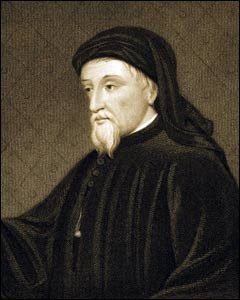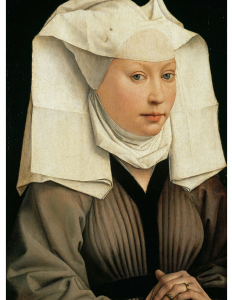
Geoffrey Chaucer (c.1340-c.1400)
Geoffrey Chaucer was born into the middle class in London around 1340. Geoffrey spent his childhood around his father who was a wine merchant. Being in this environment, Chaucer picked up on many languages that were spoken around him, where he became fluent in French, Italian and Latin. Shortly after his father was able to get him a position as a page to the court of the Countess of Ulster which was a milestone for him. Chaucer was married to a woman named Philippa. After working for multiple members of the nobility, Chaucer then enlisted into the English Army. Aside from his life in the Army where he was captured by the French, Chaucer enjoyed traveling the world to interact with people. Many of his social engagements influenced his writings, one of which being The Canterbury Tales. Another well known poem of Chaucer’s was The Knight’s Tale. He was very passionate about his work and he didn’t even consider his work a career nor himself a poet. This satirist died on October 25th, 1400. Geoffrey Chaucer is known to be one of the most important figures in English literature.
Fun Facts:
1. Chaucer’s “The Canterbury Tales,” was originally supposed to be 120 stories long, but was finished in 24.
2. Chaucer was employed by the government part-time as a diplomat, and he also collected scrap metal to recycle.
3. Geoffrey was left in charge to collect and audit the towns main source of revenue by recording all of the information on the taxes, and incoming products to the ports.


Geoffrey Chaucer's Grave
Work Cited
“The Canterbury Tales.” Geoffrey Chaucer Biography, www.cliffsnotes.com/literature/c/the-canterbury-tales/geoffrey-chaucer-biography.
“Geoffrey Chaucer: Some Background to the Poet and His Times.” Masterworks of British Literature, 6 Feb. 2009, masterworksbritlit.wordpress.com/2009/02/06/geoffrey-chaucer-some-background-to-the-poet-and-his-times/.
Ibraheem, Leah. “Little Known Facts about Geoffrey Chaucer.” Smithsonian Journeys, www.smithsonianjourneys.org/blog/little-known-facts-about-geoffrey-chaucer-180950908/
Ninth Edition Volume A- The Middle Ages


